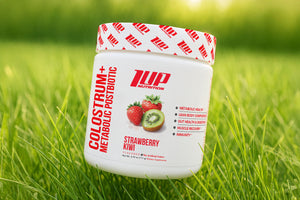“Muscle confusion” is a topic that’s been popular in the world of fitness for quite some time.
Essentially, the idea behind muscle confusion is to change exercises, rep schemes, training frequency, and exercises in order to help prevent the body from hitting a plateau, something we’ve all encountered and struggled to shatter.
The truth is that you don’t really need to “confuse” the muscles as has become popular with home training programs. You do need to overload them by doing more reps, more sets, and more weight.
You see, programs that are centered around “confusing” your muscles really just have you performing 10 different variations of push ups in a single workout, and then the following week you perform another 10 different variations, under the illusion that constantly changing your exercise selection prevents your body from adapting and ultimately hitting a plateau.
The reality is that this approach is counterproductive for building muscle. You see when you change exercises constantly, your CNS spends more time and energy figuring out how to properly do the movement than it does on actually overloading the muscles -- which is the entire objective behind training for muscle growth.
Now, make no mistake, you do need to challenge the muscles in order to make them grow, but that’s accomplished rather simply by making the muscles do more work than they previously have in a given training session.
Today, we’re going to show you how to strategically vary your training to maximize your time spent in the for better results and maximum muscle growth!
Strategic Variation vs Muscle Confusion
While strategic variation could be considered the same thing as muscle confusion, there is a rather big distinction between the two.
Muscle confusion implies haphazardly changing exercises, rep schemes, training splits, etc. in order to “shock” the nervous system and musculature.
Strategic variation is a targeted, intention-filled alteration in workout structure and programming. Basically, you have a reason for changing something in your program that has an additive or beneficial impact on your training (and ultimately, your results).
While muscle confusion might be good for helping you avoid “boredom” with your training, it doesn’t necessarily guarantee your inducing progressive overload in your training (which is the fundamental principle of muscle growth).
Using strategic variation will:
- Enhance muscle and strength
- Decrease injury risk
- Address lagging muscle groups
- Maximize athletic performance
Strategic variation begins with choosing exercises that hit a muscle group from different angles, which has been shown in research to lead to greater overall hypertrophy.
Another important facet of strategic variation is understanding when it’s time to increase training frequency or volume as well as when it’s time to deload and/or swap out exercises.
This brings us to the next topic…
How Often Should I Change Exercises?
A lot of “experts” on the internet will tell you that you have to deload every four weeks, after which you completely overhaul your exercise selection.
This simply isn’t true.
If you’re using a good selection of exercises, there’s no reason that you “have” to change exercises every four weeks.
For instance, if you’ve been training consistently for four weeks, making constant gains in either reps and/or weights, why would you arbitrarily take a deload week?
You’re effectively stopping your progress because some “guru” told you to deload every four weeks.
The real answer to “how often should I change exercises?” is -- only you know.
What we mean by that is that only you really know when an exercise stops being effective.
Some warning signs that an exercise isn’t providing as much muscle-building “bang” for your exercise “buck” are:
- Less pumps in a given muscle group
- Drastically less soreness (even though you’re increasing sets, reps, and weights)
- Minor aches in the tendons, joints, etc surrounding the target muscles
- Inability to increase in reps or loading
At this point, it would be wise to take a deload week and maybe alter your order of exercises and/or replace one or two of the exercises for a given muscle group.
One thing that is not necessary when beginning a new training cycle is to completely overhaul your entire exercise selection. Even the smallest tweaks, such as simply rearranging the order in which the exercises are performed, is enough to spark new growth.
Here’s an example of how to strategically vary your exercises for the chest over the course of a 12-week training cycle:
Weeks 1-4
- Bench Press -- 4x8
- Incline Dumbbell Bench -- 3x12
- Cable Crossovers -- 3x15
Weeks 5-8
- Bench Press -- 4x10
- Machine Chest Press -- 3x12
- Pec Dec -- 3x15
Weeks 9-12
- Bench Press -- 5x8
- DB Squeeze Press -- 3x12
- Deficit Push Ups -- 3x Max reps
Stress Muscles At Different Angles
As we mentioned above, to ensure maximum muscle growth, it’s helpful to vary the angles from which you attack the muscles.
In other words, the pundits who say things like “squats are all you need to build big legs” and/or “bench press is all you need to build a big chest” are wrong.
Strategic variation implies that you’re attacking the muscles from multiple angles and loading the tissues at different force vectors to maximize tension across the entire length of the muscle belly.
Here’s what this looks like in practice using the biceps:
- Standing Barbell Curl
- Incline Dumbbell Curl
- Rope Hammer Curl
Strategic Variation Helps Reduce Overuse Injuries
Pushing hard while limiting the possibility for injury is the key to making consistent gains over the long term. In other words, if you’re constantly getting strains, sprains, pulls, or tendonitis, you’re limiting how many overloading sessions you can perform each week, month, and year, which undercuts your progress and muscle growth potential.
By implementing strategic variation, you can help avoid overuse injuries since you’re not overdoing the same movement pattern and stressing the supporting structures (joints, ligaments, connective tissue, etc.) in the same manner over and over again.
So, instead of barbell squatting 3 times per week, vary your leg training between back squats, front squats, leg presses, split squats, lunges, etc.
Even subtle tweaks can help avoid overuse injuries, such as varying your foot placement on the sled of the leg press (narrow vs wide, high vs low, etc.) or alternating between high bar and low bar squats.
Be Wary of Variation for Variation’s Sake
As we mentioned above, variation and overload is necessary for continual progress and growth, but don’t forget the strategic part of variation.
Mindlessly switching exercises from week to week and/or plugging in excessive number of exercise variations within a given workout simply isn’t necessary, and it may actually be counterproductive to your muscle building results.
Sure, these new exercises may provide a novel stimulus to the body, but are you actually creating overload on the muscles and bringing them to a high level of fatigue?
That’s very hard to tell, if you don’t have at least some consistency to your training from one week to the next.
Takeaway
Strategic variation is an intelligent way to attack your training that allows you to train more often, complete more volume, and make bigger gains all while helping reduce the risk of overuse injuries.
It’s not simply mixing things up every week to confuse the muscles. It’s more targeted, nuanced, and refined.
Use the tips above to implement strategic variation into your own training programs so that you can avoid plateaus and keep seeing results during your transformation challenge.
And, if you need help recovering from your intense training sessions, make sure you’re covering all of your nutrition and supplementation bases.
Some of our preferred supplements to use (especially when trying to maximize muscle growth) are:
- Pre Workout (to help enhance performance during training)
- Protein powder (to support muscle growth and repair)
- Pure Rebuild (for enhanced recovery and daily creatine needs)






